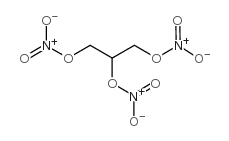Society of cardiovascular anesthesiologists: the effect of blood pressure regulation during aortic coarctation repair on brain, kidney, and muscle oxygen saturation measured by near-infrared spectroscopy: a randomized, clinical trial.
Annelies Moerman, Thierry Bové, Katrien François, Stefan Jacobs, Isabel Deblaere, Patrick Wouters, Stefan De Hert
文献索引:Anesth. Analg. 116(4) , 760-6, (2013)
全文:HTML全文
摘要
In this study, we compared the effects of 3 frequently used arterial blood pressure-regulating agents on brain (rScO2), renal (SrO2), and muscle (SmO2) oxygen saturation, during aortic coarctation repair in children. Based on the reported adverse effect of sodium nitroprusside (SNP) on left-sided rScO2 during aortic coarctation repair, we tested the hypothesis that the alterations in left rScO2 occurring with SNP would not be present with sevoflurane and nitroglycerin (NTG). Additionally, we explored the effects of blood pressure regulation with SNP, NTG, or sevoflurane on right-sided rScO2, SrO2, and SmO2.Children with isolated aortic coarctation undergoing surgical repair through a left thoracotomy without the use of cardiopulmonary bypass were considered eligible for the study. During aortic cross-clamping, control of mean arterial blood pressure (MAP) was conducted according to randomization by the use of SNP, NTG, or sevoflurane to obtain a mean target right brachial blood pressure of 120% to 150% of the MAP value before cross-clamping. Bilateral rScO2, SrO2, and SmO2 were recorded continuously with near-infrared spectroscopy. As a primary end point, the maximal relative change in left-sided rScO2 in response to aortic cross-clamping was compared among treatment groups.Ten patients per group were included. No significant difference among treatment groups was observed in maximal relative change in left-sided rScO2 (SNP versus sevoflurane: mean difference -0.7%, 99% confidence interval [CI] -31% to 29%, P = 1.0; SNP versus NTG: mean difference -1.8%, 99% CI -32% to 28%, P = 1.0; sevoflurane versus NTG: mean difference -1.1%, 99% CI -31% to 29%, P = 1.0). Additional analyses also detected no difference between groups in right rScO2 (P = 0.4). Compared with NTG, treatment with SNP resulted in a significantly larger (-64% ± 17% vs -34% ± 25%, P = 0.01) and faster (-9 ± 4 %·min(-1) vs -4 ± 3 %·min(-1), P = 0.004) decrease in SmO2. Right-sided rScO2 and MAP showed a poor correlation for NTG (r = -0.2, P = 0.93), whereas borderline for sevoflurane (r = 0.44, P = 0.09) and SNP (r = 0.56, P = 0.04).The mean differences in left-sided rScO2 among the patients treated with SNP, NTG, or sevoflurane for proximal hypertension during aortic cross-clamping were no more than 32%. Additional analysis demonstrated a low MAP-rScO2 dependence with the use of NTG. Because NTG also resulted in a smaller and slower decrease of oxygen saturation in peripheral tissues, our data suggest that its use might be preferable for proximal blood pressure control during surgical procedures involving aortic cross-clamping.
相关化合物
| 结构式 | 名称/CAS号 | 分子式 | 全部文献 |
|---|---|---|---|
 |
硝普钠
CAS:13755-38-9 |
C5H4FeN6Na2O3 | |
 |
硝化甘油
CAS:55-63-0 |
C3H5N3O9 |
|
In vivo imaging of reactive oxygen species in mouse brain by...
2014-12-01 [J. Cereb. Blood Flow Metab. 34(12) , 1907-13, (2014)] |
|
Involvement of H1 and H2 receptors and soluble guanylate cyc...
2014-10-01 [Microcirculation 21(7) , 593-605, (2014)] |
|
Propofol protects against nitrosative stress-induced apoptot...
2013-07-01 [Surgery 154(1) , 58-68, (2013)] |
|
Exogenous sodium nitroprusside alleviates arsenic-induced ox...
2013-04-01 [Ecotoxicology 22(3) , 584-96, (2013)] |
|
Dominant negative PPARγ promotes atherosclerosis, vascular d...
2013-05-01 [Am. J. Physiol. Regul. Integr. Comp. Physiol. 304(9) , R690-701, (2013)] |